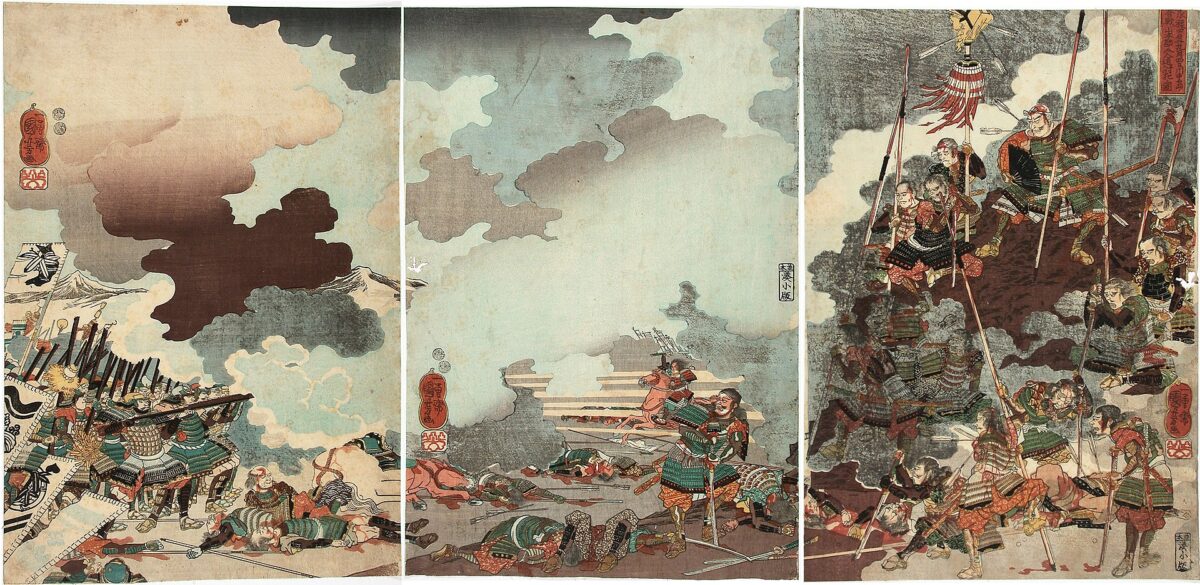A classic work when it comes to strategy and warfare is Sun Tzu’s The Art of War, which has found application outside of the field of combat. Business executives and politicians refer to it. After that, Von Clausewitz’s On War is taken to be a classic of combat strategy. Another, perhaps less well-known work, is Yamamoto Kansuke’s Secrets of the Japanese Art of Warfare.
Yamamoto Kansuke was a Japanese samurai and general in the Sengoku period (16th century), who is known as one of the much-mythologised and celebrated “Twenty-Four Generals of Takeda Shingen.” His lay monk name was “Doki” meaning “Demon of the Way.” The book Secrets of the Japanese Art of Warfare: From the School of Certain Victory is attributed to him, as he is known as a brilliant strategist, soldier, commander, and tactician. His origins aren’t known, other than that he came from a humble background, but he is known to have distinguished himself as a soldier and his line of thought belongs to a school of strategy known as the “art of certain victory.”
This school of thought is said to originate with a master swordsman called Miyamoto Musashi, and the origins are recorded in Essentials of Military Matters by Yamaga Takatsune. In this work, Kansuke is mentioned by name, referencing his theory that emphasises how strategy is about knowing when to act and when to refrain from action.
The book predates the formalisation of martial arts and is born from warfare, but it applies to martial arts and carries tactical insights which refer directly to unarmed, man-to-man combat. Part 2 of the work discusses wrestling and boxing. In the opening lines, Kansuke describes how wrestling and boxing are not “arts for major war,” but provide “great advantages for limbering the body, so you can advance when you should and retreat when you should, and settle contests grappling.” In other words, martial arts serve to prepare for war, but can in the last instant prove useful in combat.
When describing what he calls “Yang forms” and “Yin forms,” we see examples of throws that are very similar to Judo. For example, he says:
Also, when A tries to hit B with his right hand, B makes as if to hit A with his left, but instead of striking, B places his left foot behind A, then reaches around A’s shins and lifts both of A’s feet to throw him.
This is reminiscent of throws such as the Ōuchi gari in Judo.
There are about 9 different techniques described with more variations, but several of them include weapons as the manual is intended for warfare. When, for example, Kansuke speaks of grappling when you are on your back, he presupposes the opponent has a dagger. We see here the lineage of martial arts with weapons, such as Aikido and Kendo.
Kansuke also elaborates on how to gain advantages in fights and how to think tactically. When facing two opponents, he says, face them both head-on. Make it seem like you will strike the one to the right, but go for the one on the left. When the one on the right backs up, step to the side and attack your adversary on the left. Whether or not this works surely depends on the skill set of the attacker. Nonetheless, we don’t recommend trying this!
Kansuke’s work is considered a classic in war strategy and has found use amongst those involved in law enforcement, the army, martial artists, athletes, and business executives. It ranks amongst the other classics of war strategy and is an easy, informative read. The English translation by Thomas Cleary can be bought on Amazon.
Lyssna på det senaste avsnittet av Fighterpodden!

Kommentarer